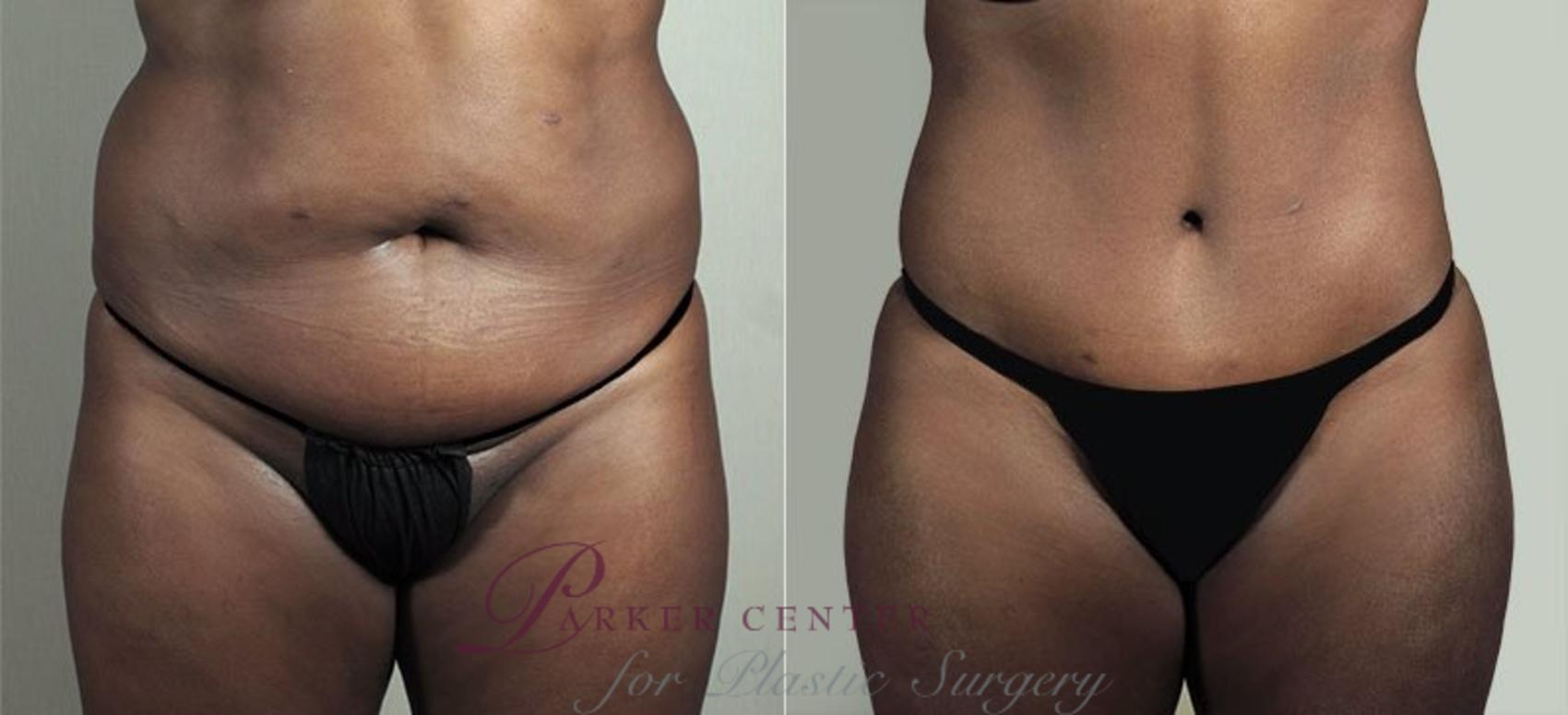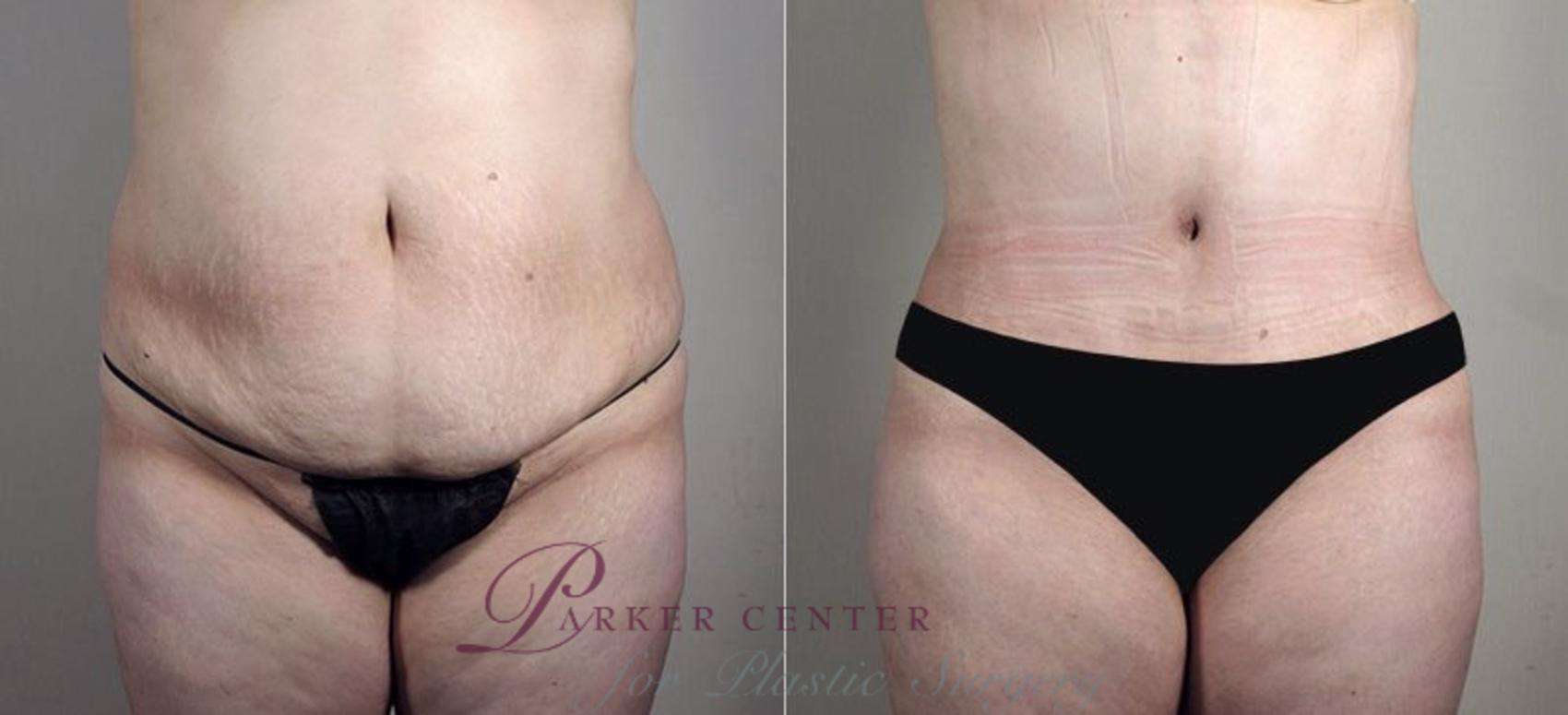Tummy Tuck
Before & After Photos
WARNING:
This feature contains nudity. Please click OK to confirm you are at least 18 years of age and are not offended by such material.
In the first part of our tummy tuck talk with Dr. Parker, we learned what special steps he takes during an abdominoplasty procedure to ensure the most beautiful results possible for his New Jersey tummy tuck patients. But how does he determine whether a tummy tuck—or another body procedure—is what a patient needs to get the results they want?
Today, we talk to Dr. Parker about what he looks for during a patient consultation to help him design the appropriate treatment plan and learn more about his unique and popular Parker Tummy Tuck procedure.
What are some of the main concerns your tummy tuck patients have when they first come in to see you?
These patients simply don’t like the appearance of their tummy. Typically, they feel it is either too full or, if they’ve had children or gained and lost a significant amount of weight, they’ve got loose skin. The first step in the process for me, as the plastic surgeon, is to examine the patient and determine where the problem or problems lie—in the skin, the fat, or the muscles?
What do you look for in each of these areas?
First, I will look at a patient’s skin. I want to see whether the skin is smooth and contracts well, or if they have stretched-out skin, stretch marks, or loose skin folds. I’ll also assess the underlying fatty tissue, which sits beneath the skin and above the abdominal muscles, to determine whether they’ve got too little fat, just the right amount of fat, or as is often the case, more fat than what is desirable.
The next thing I’ll do is evaluate the underlying muscles, or what are anatomically called the rectus abdominus—a pair of muscles that have their beginning up on the rib cage and run vertically from the rib cage down to the pubic bone. These are commonly referred as our “abs,” as in, “I’m going to go do crunches and work out my abs.” When you’re young, these muscles are held tightly together in the middle by a ligament. After pregnancy or significant weight gain, that ligament can weaken, causing those muscles to drift outward to either side.
So that’s the next thing that we’ll look at—do they have any separation of those rectus abdominus muscles? Medically, that separation is called diastasis recti. Sometimes, a significant muscle separation can cause a weakness right in the area around the belly button, called an umbilical hernia. We want to know about that beforehand as well.
Possible treatment plans vary from doing nothing to choosing something non-surgical like CoolSculpting or surgery including liposuction or tummy tuck.
After evaluating these factors and also hearing what concerns the patient has, we will sit and talk about possible treatment plans. These vary from doing nothing, to losing weight first if a patient is above his or her goal weight, to choosing something non-surgical like CoolSculpting®, or of course surgery such as liposuction or a tummy tuck.
Can you give some examples of situations where you might recommend a certain treatment?
Sure. Let’s say a patient has just a little localized fullness in the lower abdomen. We can usually deal with this non-surgically using CoolSculpting. Liposuction alone can also be a good option if the patient has good skin tone and if those rectus muscles aren’t too separated.
But, if somebody has significantly stretched-out skin, then liposuction is not going to work. If somebody’s got significantly stretched-out muscles, again, neither liposuction nor CoolSculpting is going to work. If we need to address either or both of these issues—loose skin or loose muscle—then we’ll do a tummy tuck. Typically, at the same time we do the tummy tuck, we’ll address some of the extra fat with concomitant liposuction.
This led us to ask Dr. Parker about the Parker Tummy Tuck, which combines targeted liposuction and abdominoplasty for enhanced results…
How do your specific tummy tuck techniques help patients get better results?
I think our results are enhanced by performing liposuction at the time of the tummy tuck when it’s appropriate. Because the hips live right next door, if we can rejuvenate them at the same time, we can improve the whole circumference of the torso, not just the tummy.
Patients who opt for both hip liposuction and a tummy tuck say they fit into swimwear and tight-fitting clothing so much better.
I probably do liposuction to a patient’s hips, thighs or lower back over 90% of the time with tummy tucks. This helps to create some nice sculpting, sort of an hourglass figure to the waist area. So we remove fat in the hips—the so called “muffin top” area—and then we tighten the skin in the hips as well as the tummy.
Patients who opt for both say they fit into swimwear, workout clothing, and tight-fitting clothing so much better. Because it’s not just about the tummy; it’s really about the whole torso. Obviously if a woman comes in and she doesn’t have fat to be removed, well, of course we don’t do that. But appropriate liposuction is I think very helpful in improving our results.
What if a patient has already had a tummy tuck without additional hip contouring?
Well, I just saw a lady this morning that I did a tummy tuck on about a year ago and she opted, at that time, not to have liposuction of her hips. She came back and said, “Okay, I know you told me this. You said there’s a good chance that I’d come back to have liposuction. Well, now I’m ready.” I told her, great! It’s fine, no big deal. Like we talked about, liposuction can be done at the time or it can be done after the fact. It’s not like you burned a bridge.
As you can see, there is no such thing as a one-size-fits-all treatment plan when it comes to tummy tucks or any other body procedure. Getting top-notch results takes an individualized approach and skilled plastic surgeon. If you are curious to learn more about ways you can improve the shape of your torso, please contact us at the Parker Center in New Jersey. Dr. Parker offers consultations for cosmetic procedures, and will be happy to discuss your goals and help you figure out the best way to achieve the look you want.













Leave a Reply